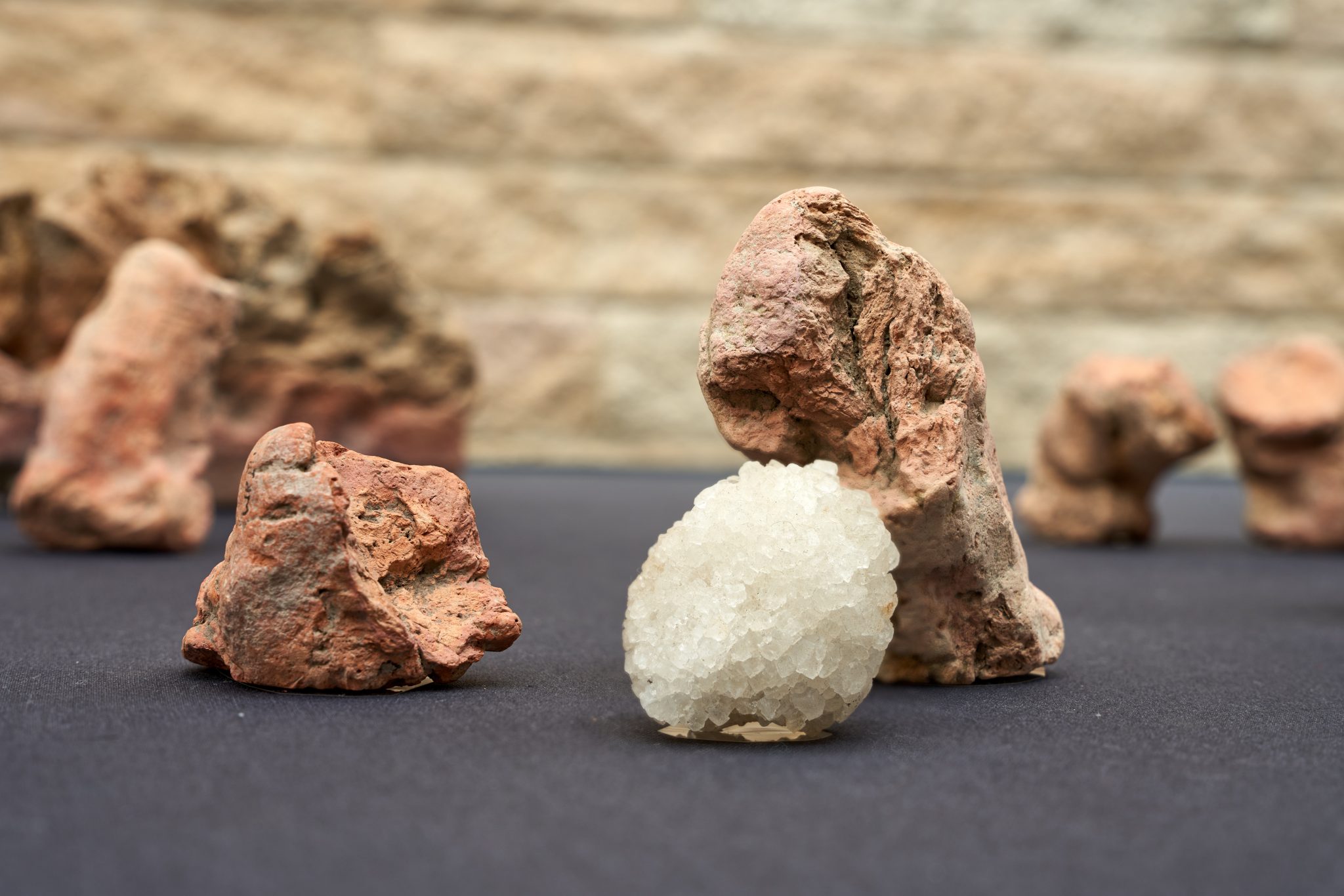The Collection Museum, Lincoln
A cacophony of different voices emanates from speakers hidden in a large stone wall in the Orientation Hall at The Collection Museum. The words spoken belong to the artist Laura Wilson, the archaeologist Tom Lane and six female volunteers – Ann, Cherry, Fiona, Jo, Kay and Olivia. Each soundbite is connected in some way to salt, offering expert, personal and local perspectives. Taking time to walk along the wall and listen to each voice allows the extraordinary to emerge from something seemingly humble and easily taken for granted. One sentiment speaks for many who will encounter Old Salt: “I didn’t think much about salt until McDonald’s.”
Laura Wilson was invited to spend time getting to know the geography and histories of Lincolnshire through researching The Collection’s extensive and diverse archive. She spent time with archivists and the physical items, observing, noticing, and questioning through the act of finding ‘in the moment’, rather than starting with predetermined ideas and structures. This approach enabled her to discover something surprising – a collection of ceramic ‘briquetage’. These coarse ceramic vessels were once common in the Fenlands of Lincolnshire for centuries, used in the production of salt. These clay pans were filled with saltwater and heated from below until the water had evaporated to leave the salt behind. Examples of these somewhat non-descript objects are now found in a display cabinet in Wilson’s exhibition, their past use discovered by listening to the voices. They remain somewhat enigmatic and magical as both material object and process, as a volunteer’s voice says, “it just fascinates me how they learnt to do it in the first place.”

Listening to the soundscape gives back more than even an interesting history lesson can. The combined voices present a rich tapestry of content, one that takes the encounter with salt in different directions and is representative of the layers of histories that lie waiting to be found beneath the ground. The voices of the volunteers are integral to the experience of the work. Wilson decided to include volunteers in her piece after witnessing the knowledge, care and passion that Lincoln Castle volunteer Ann Stafford has for the Magna Carta (one of whose four copies is held there). The voices’ presence is integral to the success of the piece, the multitude offering a more informed take on the subject than a lone expert might. Listening to the work and seeing other archaeological objects that happen to be on show at the same time prompts questions: What will future archaeologists make of the neon lights of Skegness when they are dug up? What stories will be told by everyday folk in generations to come to help them understand our present? I left the museum with my mind buzzing with new thoughts on salt however, after all, “It is not just something you put on chips.”
Laura Wilson: Old Salt is at The Collection Museum, Lincoln, 20 May – 23 August
This article is part of Remark, a new platform for art writing in the East Midlands by ArtReview in collaboration with BACKLIT. Read more here and sign up for the Remark newsletter here
